Conversation
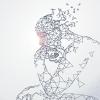 As public concern about the ethical and social implications of artificial intelligence keeps growing, it might seem like it’s time to slow down. But inside tech companies themselves, the sentiment is quite the opposite says Casey Fiesler, an associate professor at the University of Colorado Boulder.
As public concern about the ethical and social implications of artificial intelligence keeps growing, it might seem like it’s time to slow down. But inside tech companies themselves, the sentiment is quite the opposite says Casey Fiesler, an associate professor at the University of Colorado Boulder. Daniel Acuña, an associate professor of computer science at the University of Colorado, was recently featured on a podcast from The Conversation.
Daniel Acuña, an associate professor of computer science at the University of Colorado, was recently featured on a podcast from The Conversation.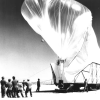 The Conversation asked aerospace engineer Iain Boyd of the University of Colorado Boulder to explain how spy balloons work and why anyone would use one in the 21st century.
The Conversation asked aerospace engineer Iain Boyd of the University of Colorado Boulder to explain how spy balloons work and why anyone would use one in the 21st century.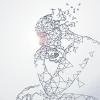 Artificial intelligence remains something of a misnomer – the smartest computer systems still don’t actually know anything – but the technology has reached an inflection point where it’s poised to affect new classes of jobs: artists and knowledge workers.
Artificial intelligence remains something of a misnomer – the smartest computer systems still don’t actually know anything – but the technology has reached an inflection point where it’s poised to affect new classes of jobs: artists and knowledge workers. CU Boulder is leading an international network of over 50 scientists and students using olfaction to study brain function in animals known as Odor2Action. In a new story published in The Conversation, network members trace the interconnections between smells and behaviors – highlighting what we know about olfaction, the challenges we face, and what's on the horizon. Learn more about their work and potential applications in engineering, neuroscience and public health.
CU Boulder is leading an international network of over 50 scientists and students using olfaction to study brain function in animals known as Odor2Action. In a new story published in The Conversation, network members trace the interconnections between smells and behaviors – highlighting what we know about olfaction, the challenges we face, and what's on the horizon. Learn more about their work and potential applications in engineering, neuroscience and public health. Department of Mechanical Engineering Professor Shelly Miller shares her recent air quality research about COVID-19 transmission with The Conversation.
Department of Mechanical Engineering Professor Shelly Miller shares her recent air quality research about COVID-19 transmission with The Conversation.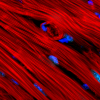 Professor Corey Neu explains how his team found that mechanical forces can reorganize the genetic material inside the nucleus of heart cells and affect how they develop and function.
Professor Corey Neu explains how his team found that mechanical forces can reorganize the genetic material inside the nucleus of heart cells and affect how they develop and function.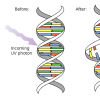 Professor Karl Linden explains his new research findings in The Conversation.
Professor Karl Linden explains his new research findings in The Conversation. The first examples of color-changing nanotech tattoos have been developed over the past few years, and they’re not just for body art.
The first examples of color-changing nanotech tattoos have been developed over the past few years, and they’re not just for body art.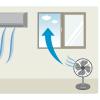 Good ventilation can reduce the risk of catching coronavirus. Environmental engineer Shelly Miller explains how to know if enough outside air is getting into a room and what to do if ventilation is bad.
Good ventilation can reduce the risk of catching coronavirus. Environmental engineer Shelly Miller explains how to know if enough outside air is getting into a room and what to do if ventilation is bad.

